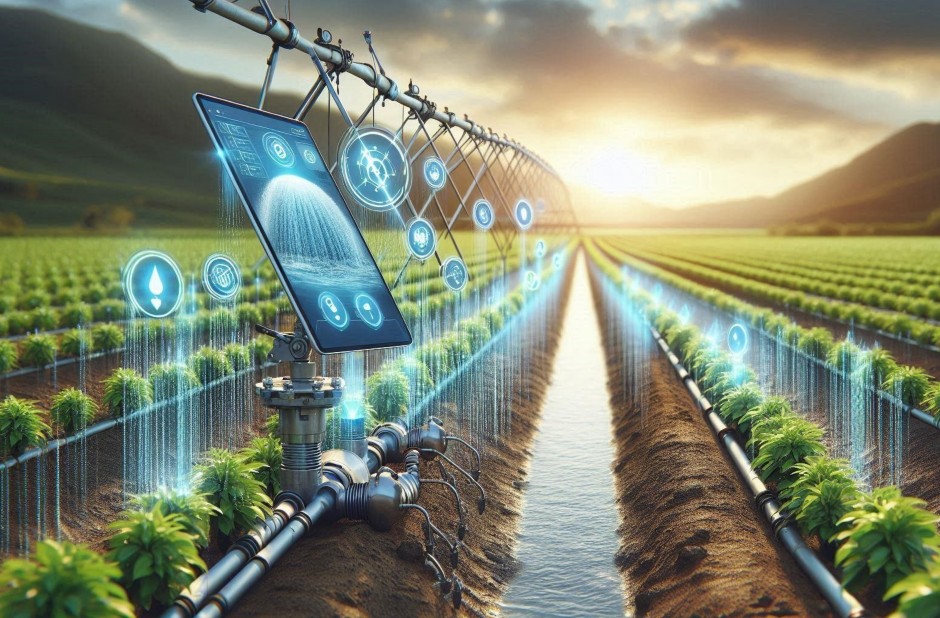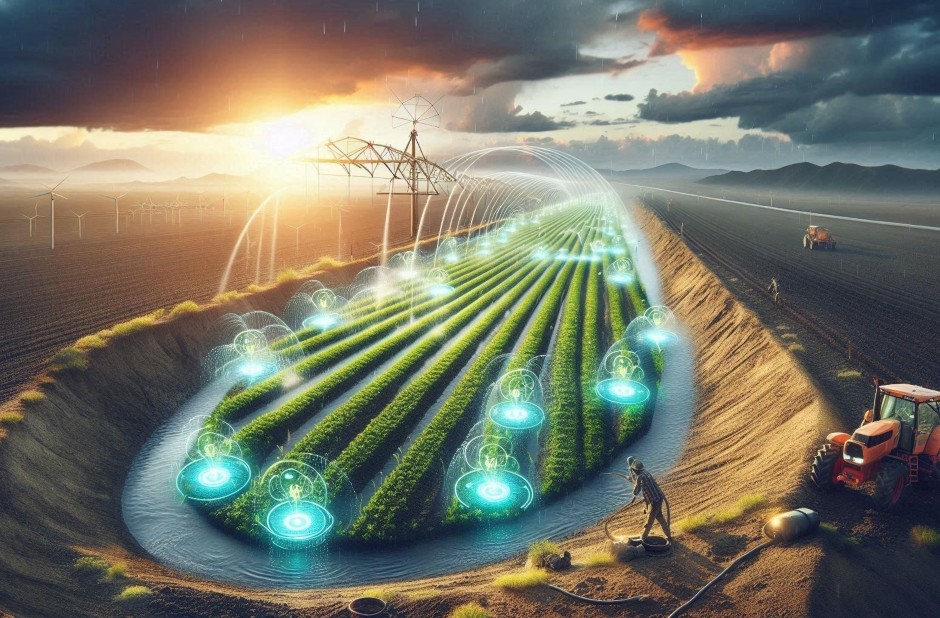In recent years, there has been a significant advancement in the field of Artificial Intelligence (AI) and Augmented Reality (AR). These technologies have become increasingly popular and have the potential to enhance virtual experiences in various fields such as gaming, education, healthcare, and...
Smart Irrigation System Protects Fields from Drought

The challenges posed by unpredictable weather patterns and changing climate conditions are becoming increasingly evident, especially when it comes to agriculture. Farmers are constantly searching for ways to maintain consistent crop production despite environmental stress. This has led to the development of advanced technologies that focus on more efficient resource management, ensuring that crops receive the care they need even during adverse conditions.
Modern agricultural techniques are evolving to address these challenges, incorporating tools that enhance the precision of water distribution. These innovations not only help conserve valuable resources but also increase the overall efficiency of farming practices. By automating the process and adjusting to the specific needs of each crop, these technologies provide a reliable solution to combat the effects of water shortages.
The role of these advanced tools goes beyond simple resource management. They enable farmers to react quickly to changes in the environment, reducing the risks associated with insufficient watering and preventing damage to crops. As a result, agricultural operations can thrive even when facing prolonged periods of arid conditions, ensuring a stable food supply for communities.
Benefits of Smart Irrigation for Agriculture
The introduction of advanced technologies into farming practices has significantly transformed how crops are cultivated, particularly when it comes to water usage. By utilizing precision techniques, agricultural processes are becoming more efficient, ensuring that resources are allocated exactly where they are needed. This not only reduces waste but also improves the overall productivity of the land.
Water Conservation and Efficiency
One of the most notable advantages of these innovative tools is their ability to conserve water. By adjusting watering schedules and amounts based on real-time data, farmers can ensure that crops receive the optimal amount of moisture. This reduces unnecessary water consumption, which is especially crucial in areas where water is a scarce resource. The ability to target specific areas helps prevent overwatering and under-watering, leading to healthier plants and more sustainable farming practices.
Enhanced Crop Yield and Sustainability
Another benefit of these modern farming techniques is the increase in crop yields. By providing the right amount of water at the right time, crops are less stressed and grow more consistently, leading to higher quality and quantity of produce. Additionally, these systems help farmers maintain long-term soil health by minimizing the risk of erosion and ensuring that nutrients are more effectively absorbed by the plants. This, in turn, supports sustainable agricultural practices that can thrive for generations.

How Technology Optimizes Water Usage
With the growing importance of conserving resources, agricultural practices have evolved to incorporate advanced solutions that optimize the use of water. These technologies focus on improving efficiency by providing precise and timely watering, reducing waste while ensuring crops receive the necessary moisture to thrive. Through automated monitoring and data-driven decision-making, water distribution can be better controlled to meet the specific needs of each crop, leading to more sustainable farming methods.
Data-Driven Water Management
By leveraging sensors and weather data, modern farming tools can adjust water schedules and quantities based on real-time environmental conditions. This reduces the likelihood of over-watering, which can lead to waterlogging and increased runoff. In addition, these systems are capable of identifying moisture levels in the soil, ensuring that only the areas that require watering are targeted. This precise approach helps to maximize the effectiveness of each irrigation cycle while minimizing unnecessary water usage.
Automated Control and Monitoring
Automation plays a crucial role in water management by allowing farmers to set schedules and monitor conditions remotely. This reduces the need for manual labor while ensuring that crops receive consistent care. The integration of these technologies also allows for quick adjustments to be made when weather conditions change, such as when unexpected rainfall occurs. Through continuous monitoring and automated responses, water usage becomes more efficient, improving overall crop health and reducing the strain on local water supplies.
How Technology Optimizes Water Usage
The application of modern technology in agriculture has revolutionized the way water is used to support crop growth. Through the use of data-driven tools and automated processes, farmers are now able to deliver precise amounts of moisture to crops, minimizing waste and maximizing the effectiveness of every drop. This shift not only leads to better water management but also helps to ensure consistent crop production even in regions facing water scarcity.
Data-Driven Decisions for Precise Watering
By leveraging real-time weather data and soil moisture sensors, advanced technologies can assess the exact water needs of crops at any given moment. This allows farmers to tailor their watering practices to the specific requirements of each plant, based on its current stage of growth, soil conditions, and environmental factors. As a result, water usage becomes more targeted, reducing the likelihood of overwatering or underwatering, both of which can harm crops and waste valuable resources.
Automation and Resource Efficiency
Automation further enhances the efficiency of water management by enabling the watering process to be fully controlled without manual intervention. Automated systems can adjust watering schedules and amounts based on the changing conditions throughout the day or season, ensuring that crops receive the optimal amount of moisture without unnecessary human effort. This not only saves time but also guarantees a more consistent and reliable water supply for crops, even in challenging climatic conditions.



